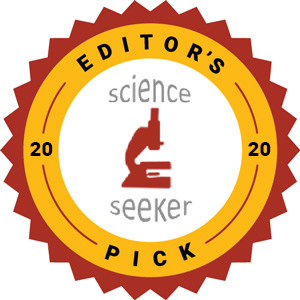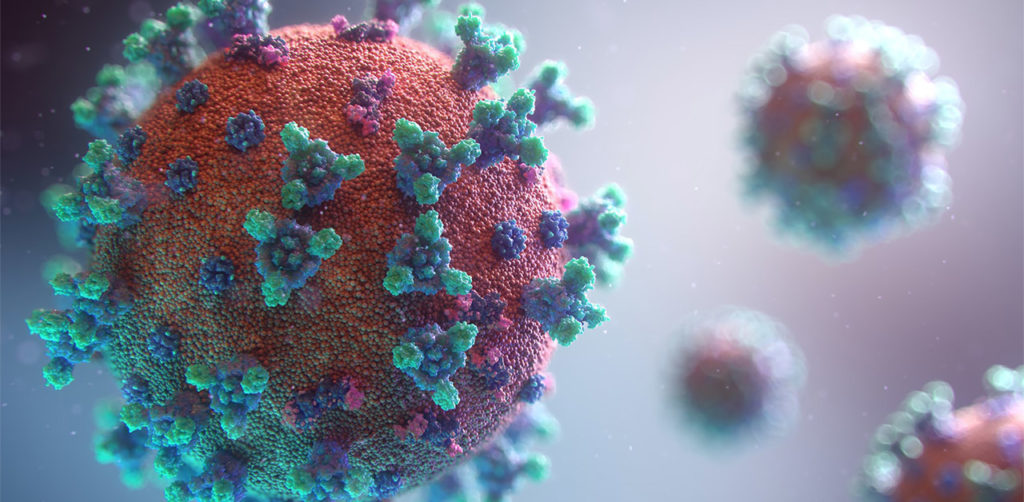
When the COVID-19 pandemic descended on New York in March 2020, Christopher Mason, PhD, knew he was in a unique position to contribute. The Mason Lab specializes in sequencing and computational methods in functional genomics – valuable expertise for addressing an emerging infectious disease. Within days, Chris and his team were helping to analyze patient data, as well as developing new tests and detection methods for the SARS-CoV-2 virus.

The Mason Lab developed protocols for a simple COVID-19 detection test that requires less time and equipment than common PCR methods. Their subsequent preprint detailing these methods quickly gained widespread attention, and Chris found himself fielding an endless stream of questions and requests.
During the frenzy, Chris received a call from his older brother. Cory Mason is the mayor of Racine, Wisconsin, the brothers’ hometown.
“He said he saw me tweeting about our new test,” Chris says. “Then he asked me, ‘What if we set it up here in Wisconsin?’’
Focusing on COVID-19 Testing
Here’s a story that might sound familiar:
Chris Mason spent most of last spring working 12 or more hours a day from home. He would wake up around 5am to do a few household chores before shutting himself in a separate room to work until 10pm. He made a deal with his daughter, saying that spring and summer would be crazy, but he promised that they would have evenings and weekends together again in the fall.
“It’s more than a juggling act,” Chris says. “It’s a juggling act on a tiny steel wire that’s covered in olive oil, while pipetting hot virus into tubes. When I was on calls and interviews, I would tell people to say hi to my wife, because I haven’t seen her.”
The Mason Lab had worked with viral detection in the past, but they hadn’t typically been looking in patient samples. Their research takes them to more peculiar places, such as environments with extreme heat, pressure or radiation. They’ve hunted viruses and other microbes on the International Space Station, ambulances and the handrails of New York City subway stations. As Chris watched many US states struggle to set up adequate systems for COVID-19 testing, he realized that existing technology used in his lab’s research could support faster methods.
One of the biggest challenges of the COVID-19 pandemic, especially in the United States, has been a limited capacity for testing. PCR-based testing is the standard method for diagnosing active infections. This type of test typically requires nucleic acid extraction, which can often be the rate-limiting step. Depending on the specific method used, it could take up to 4-5 hours to process a sample.
To address some of the issues with PCR testing, Chris and his team developed a test based on loop-mediated isothermal amplification (LAMP) with industry collaborators. This amplification method doesn’t require a lengthy extraction – the samples are instead incubated at a high temperature to inactivate and lyse the viral particles. Primers are then added to the sample and amplification takes place at a constant temperature. The results can often be read with the naked eye – if the tube turns from pink to yellow, the test is positive.
“If there’s a lot of the virus present, you can see it in eight to ten minutes,” Chris says. “If it has a lower concentration, more like 30 minutes. We saw some of the PCR tests taking up to 10-12 days to get results back. With the LAMP test, we can get results back the same morning.”
The LAMP methods developed by the Mason Lab have been used in tests that were granted Emergency Use Authorization (EUA) by the FDA for use with nasopharyngeal swabs, but the goal is to also validate them with nasal or saliva samples.
Implementing LAMP Testing in Racine, WI
When Chris answered the call from his brother, he learned that the only diagnostic test available to the city of Racine was a temperature check. At one point, the National Guard helped set up limited PCR testing, but they knew that couldn’t be sustained long-term. Chris agreed to help his brother out.
“So we hopped in a car with some lab equipment and drove across the country,” Chris says, “We set it all up at the city hall annex, which is next to the firehouse.”
The reagents and equipment for the initial setup were largely sourced through donations, including nearly $250,000 in materials from the Mason Lab and the WorldQuant Foundation. Promega provided a GloMax® Discover multimode plate reader, which allows the test results to be measured quantitatively, instead of relying on a qualitative color change. Promega has also provided technical support and training for the teams performing the tests.
Every morning, city employees stop by the annex before reporting to work. A team of firefighters in full protective equipment helps each individual collect a 1ml sample of saliva. The samples are incubated at 95°C for half an hour, and then the firemen load aliquots of each one into a reaction plate and adds the LAMP reagents. After half an hour, the output is read using the GloMax® Discover. Anyone with a positive test is notified immediately and then validated again with RT-PCR.
The LAMP testing lab gives the city of Racine the ability to monitor infections of government employees in real-time and make decisions about who should or should not be working on-site. Since the saliva samples are much easier and less painful than the nasopharyngeal swabs necessary for a PCR test, individuals are more willing to be tested repeatedly.
According to Chris, he has achieved both of his main goals for this study. First, the Racine study demonstrates that it’s possible to set up a lab from scratch and build testing capacity using his rapid testing protocols. Second, they’ve proven that anyone can perform the tests. The firefighters handling the tests in Racine had never held pipettes before.
Chris and Cory actually published a paper on the Racine study – Cory’s first scientific paper – and set up a new X-Prize competition and $50M development fund to get more testing methods onto the market. For Chris, working alongside his brother to protect public health in their hometown has been one of the silver linings of the pandemic.
“It’s been great to feel like I’m helping out my hometown and my brother,” Chris says. “My parents, sister, and other relatives live there too, and it’s a pleasure to help everyone out. It’s been very gratifying to get a sense that I can give something back to the community that raised me when they have a need.”
The city of Racine has plans to scale up its current testing capacity and is considering deploying LAMP testing in public schools. Chris says some large area businesses are also interested in implementing the system at their sites.
“We’re imagining that this can expand into a network of rapid testing sites. This is going to be a little bit of a ‘new normal’ so we want it to be both easy and actionable for people.”
Navigating International Collaboration and the ‘New Normal’
Chris kept his promise to his daughter. Since the end of summer, he’s made it a point to stop working no later than 7pm. He’s been helping her with virtual schooling, and the family has dinner together every night. Still, it will likely be a while before things return to “normal,” whatever that may look like.
“It’s like anything in life – you have to be diligent and block off time for your family, or those important things will always be intruded upon,” Chris says.
Over the summer, Chris also channeled the widespread enthusiasm generated by his initial preprint into a group he calls the Global LAMP working group, or gLAMP. This global collaboration is made up of anyone interested in the development and application of LAMP-based COVID-19 testing methods. gLAMP currently has over 250 members, including academic labs, industry teams, non-profits, and government agencies. The group meets virtually every week to share IRB protocols, best practices, reagent suppliers, and logistics. The goal is to accelerate research by sharing successes and failures as fast as possible so that everyone has the opportunity to learn from everyone else.
Despite the horrible events of the past few months and all the challenges yet to come, Chris is inspired by how the scientific community has come together to address the pandemic from all sides.
“Within the span of about nine months, we’ve found the causative agent of COVID-19 and mapped its genome. We’re using that information to design vaccines, which are being tested right now. The world has never been more connected, and thus never at a greater risk of a pandemic. But at the same time, when humanity is so connected, we can launch a truly global response to a global threat that’s amazingly collaborative. The threats we face have never been bigger, but our ability to map, treat and cure disease has also never been greater.”
Looking for more information about rapid COVID-19 testing? Check out our recent blog about XPressAmp™ Direct Amplification.
Want to learn more about how our products are used by people around the globe to answer and solve emerging questions and problems? Visit our Corporate Responsibility Website.
Related Posts
Latest posts by Jordan Villanueva (see all)
- Employee-Led Program Reduces Landfill Waste by Rescuing Plastic Film - April 24, 2024
- Raising Frogs Takes a Village: Accelerating Amphibian Research at the Marine Biological Laboratory - January 9, 2024
- Coral, Ferrets and a Lot of Elephant Poop: 5 Years of the Revive & Restore Catalyst Science Fund - December 14, 2023
